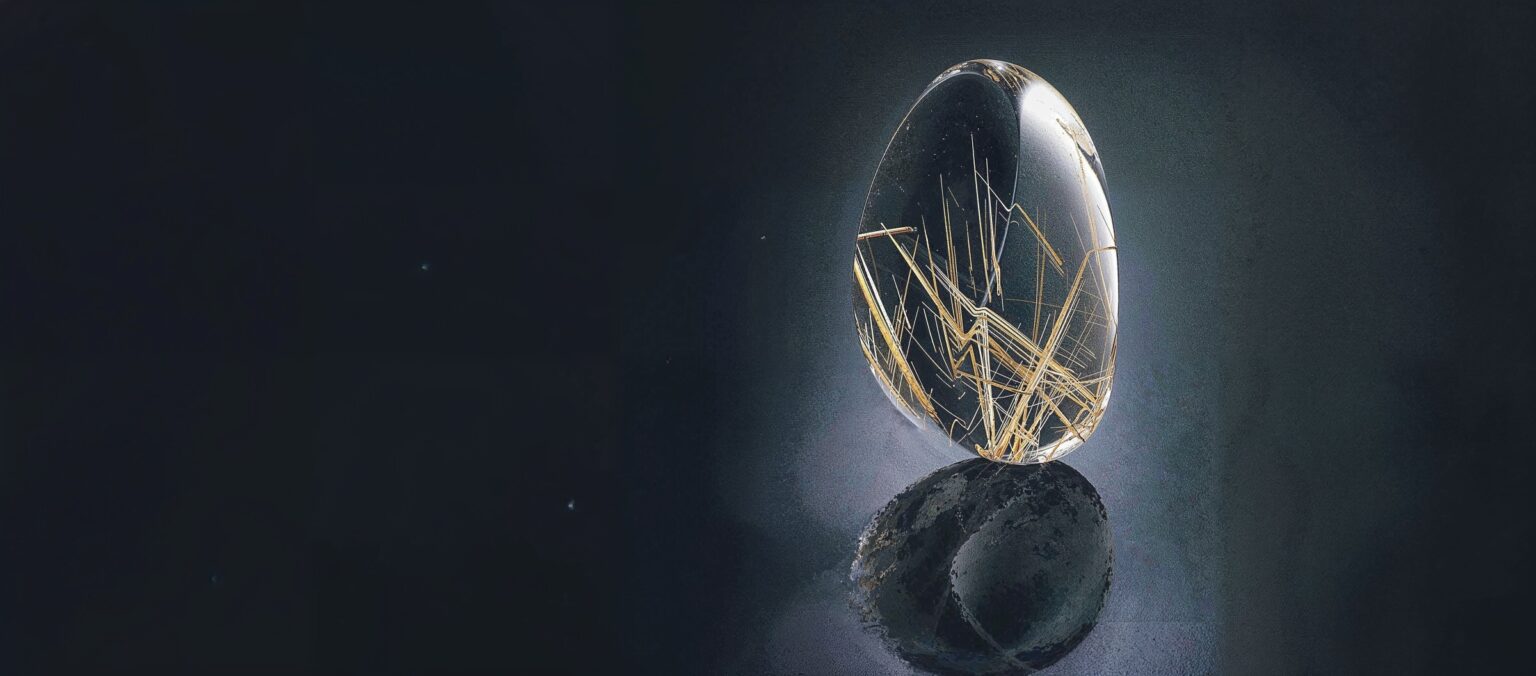David Stanley Epstein, one of the best known of America’s young gem cutters, recently began an experimental series of rutilated quartz carvings in his workshop in Teofilo Otoni, Brazil. But he doubts the outcome of his experiments will earn him enough income to continue working with this rather abundant material. The cost of rough, higher than ever before, forces him to ask prices for his finished pieces that he is sure will meet stiff resistance. “Quartz has got a reputation for being cheap,” he says.
If so, it is a reputation this particular quartz may soon escape.
In the United States, where fine rutilated quartz rough is far scarcer and prices are significantly higher than in Brazil, carvers like Michael Dyber, Rumney, N.H., and Kevin Lane Smith, Seattle, find they can readily charge hundreds of dollars for pieces composed in whole or part of this gem. “There may be plenty of rutilated quartz around,” says Smith, “but I’m lucky if 10% of what I see is suitable for carving.”
Further, the amount of material that Smith sees in this country is nowhere near what is commonly assumed. In fact, he knows of few people who regularly import rutilated quartz. So he and other enthusiasts of this gem usually must wait for that annual gaggle of gem shows called Tucson, held in early February, to replenish supplies. If they need rough sooner, they must travel either to Brazil, the chief quartz producer, or Germany, the main quartz rough repository—both options far more expensive and time-consuming than treks to Arizona.
But with American gem sculpting poised for major recognition from the public, such treks may become increasingly necessary to ensure adequate stocks of rutilated quartz—a gem that is bound to benefit from any attention given carvers. Few stones are so ideally suited to sculpting. Indeed, rutilated quartz is so unusual in its aesthetic properties that it offers gem carvers opportunities no other species affords them.
Uncommon Beauty
Among the commonest of minerals, quartz, or silicon dioxide, is found in just about every geological surrounding and every size — from grains of sand on a beach to massive crystals in rock crevices. Quartz, a sizable mineral family, is divided into two basic groups: crystalline and crypto-crystalline. Simply put, what means the former are generally clear enough to be faceted while the latter are so opaque they can only be cut into slabs or cabochons. Amethyst and citrine are the most popular varieties of crystalline quartz while black onyx and carnelian are among the most popular crypto-crystalline quartzes.
Pure crystalline quartz tends to be colorless and in that form was fashioned into lenses, as well as household utensils such as beakers, by the Romans. Interestingly, in light of the fact that the word “crystal” is derived from the Greek word for “ice,” krystallos, spheres of colorless quartz were once used by the ancients to keep the skin cool on hot days.
It’s probable that many of those spheres were not completely clear. Due to its ubiquity, crystalline quartz often forms along with other minerals or encases ones already present. “More than 40 types of minerals have been found as inclusions in crystalline quartz,” writes Joel Arem in his Color Encyclopedia of Gemstones. Among the most common of these enclosed minerals are green needles of actinolite, green moss-like fibers of asbestos and chunks of pyrite (fool’s gold).
However, rutile is the mineral inclusion most frequently found in crystal quartz.
Rutile tends to form in golden and reddish-brown crystals of anywhere from hair-like to needle-like thickness. When the rutile is hair-like, as is more often the case, it is referred to as “angel’s hair” or “Venus’ hair.” More desirable are stones with needle-like rutile, which frequently resemble pieces of wind-blown straw or densely clustered sheaves. In stones with large numbers and fascinating patterns of such needles, the rutile becomes a compelling feature in itself. Here, lapidaries insist, the rutile possesses an intrinsic aesthetic merit that elevates it above a mere inclusion— although technically that is what it is. No doubt about it, the immense variety of rutile needle arrangements, called “sprays,” frozen in otherwise clear crystal, is what attracts many gem sculptors to rutilated quartz.
But now comes the hard part: getting jewelers and their customers to share this admiration.
Inclusions as Things of Beauty
Except for amber, with its perfectly preserved insects that pre-date man, few gems are prized for their inclusions. For the most part, inclusions play a diagnostic role, helping to identify gems as being of natural origin or pinpointing them as being from a specific geographic locality (e.g., Burma for ruby).
Because inclusions serve primarily as signatures of origin, these foreign bodies are appreciated more when they require a microscope to be seen. Only “horse-tail” inclusions— byssolite fibers found in demantoid garnet and taken as nearly irrefutable proof of Russian origin—are considered attractive visible inclusions. Most others are seen as blots on beauty. This attitude is understandable. Anyone who has seen 12 to 13 diamonds with their black spots or run-of-the-mill emeralds with their many wisps and veils can be excused for feeling disgust.
But it is hard to imagine how arrays of rutile needles suspended in clear crystal quartz will offend tastes. Here the inclusions do not intrude into the gem’s beauty but contribute to it, often hauntingly so—as the photo of Smith’s Yin-Yang-like sculpture on the opposite page shows.
Finding the right piece of rutilated quartz is an art in itself. “There’s so much that can be wrong,” says gem sculptor Dyber. “First, you’ve got to find material that’s clear, then you’ve got to make sure its rutile is just right.”
According to both Dyber and Smith, easily 90% of the rutilated quartz they inspect must be rejected for carving. Many pieces lack sufficient transparency. But even when clear enough, the needles are often too sparse, crowded or fine. Pieces that need candidates for carving invariably have sprays of rutile needle that are either golden, reddish-brown or silver—although the ideal color is a deep red not seen in decades.
Carvers who regularly work with rutilated quartz say it comes in a great range of sizes weighing from ounces to hundreds of pounds. But expect jewelry pieces to run from 15 to 50 carats. Jewelers tempted to try out rutilated quartz should know that affordable machine-cut cabochons perfect for standard mountings are available from Germany and the Far East.
Please note: this profile was originally published in 1992 in Modern Jeweler’s ‘Gem Profiles/2: The Second 60’, written by David Federman with photographs by Tino Hammid.
The rutilated quartz shown in the header image measures 62mm x 39mm x 23mm and is courtesy of Kevin Lane Smith, Seattle.




